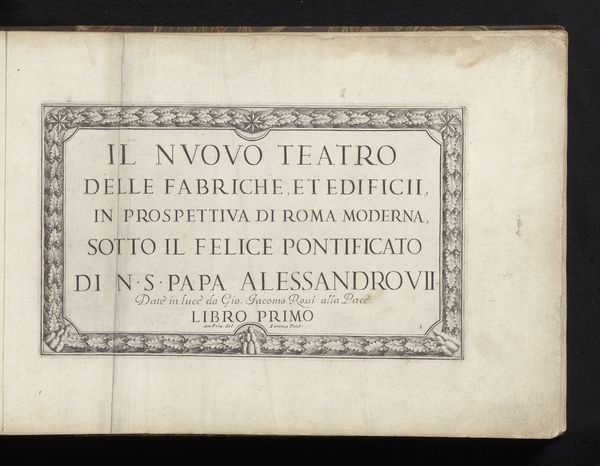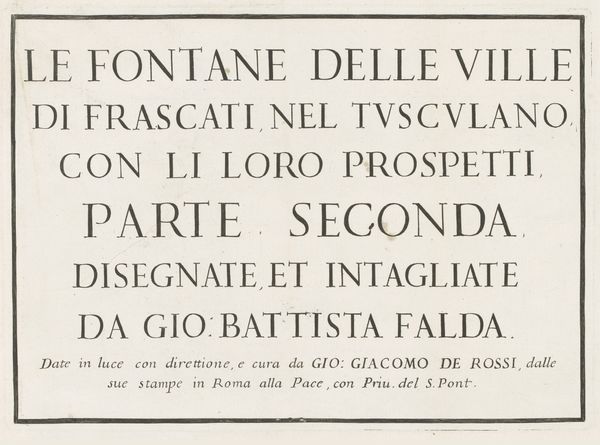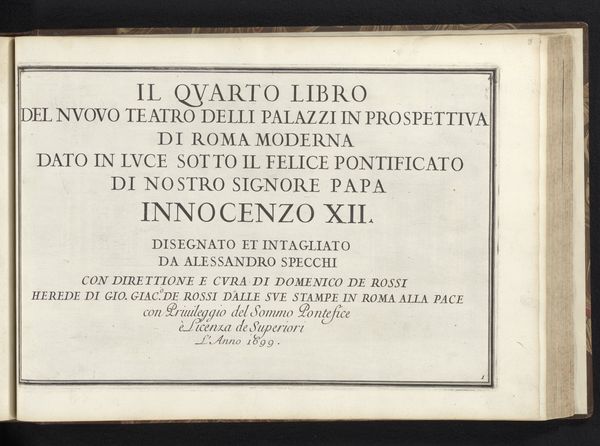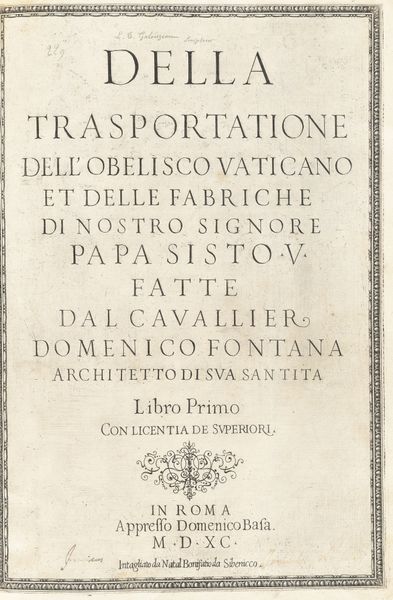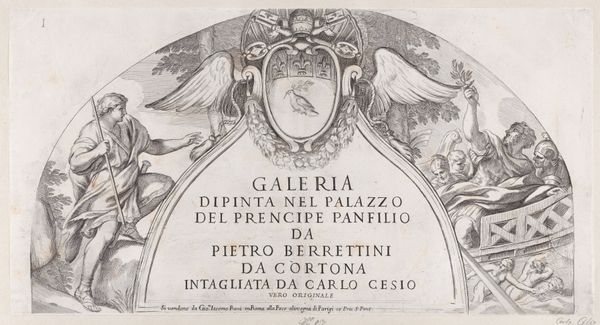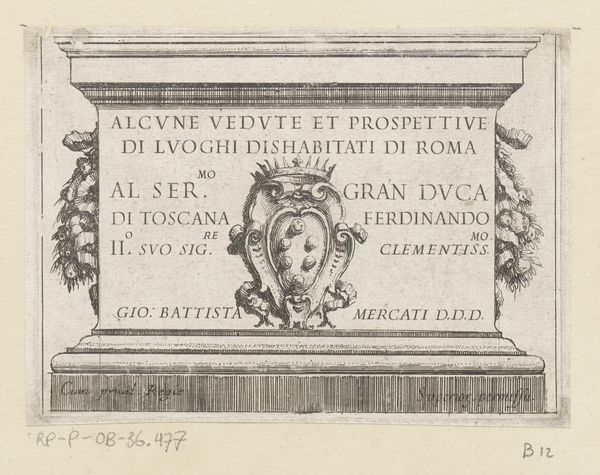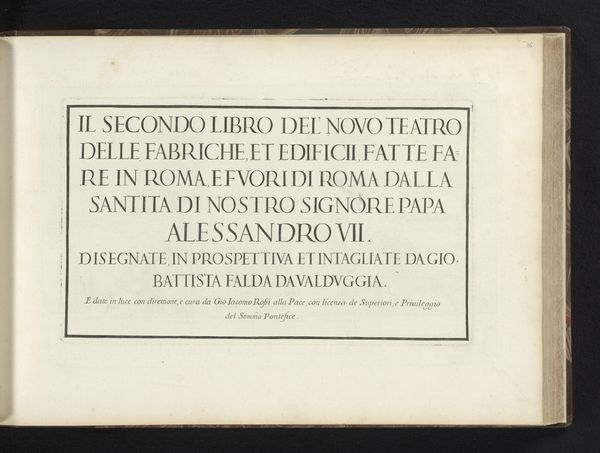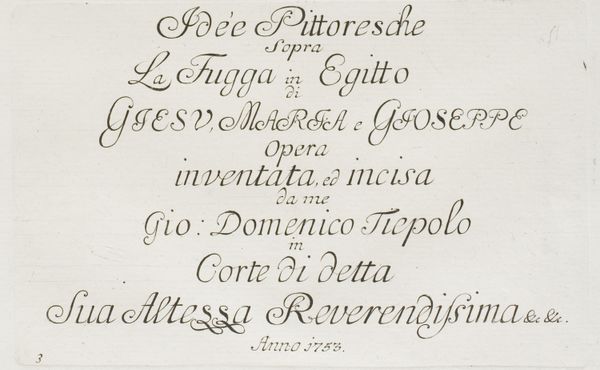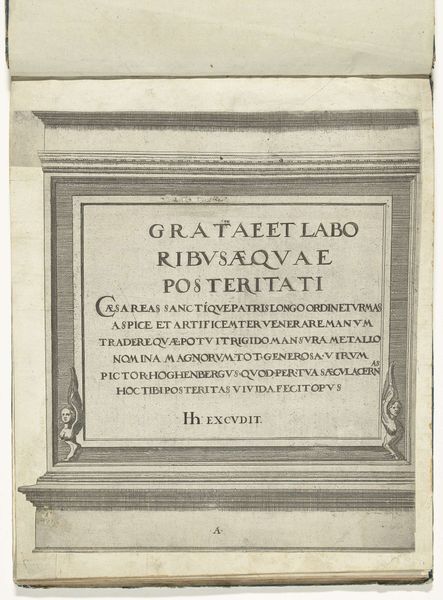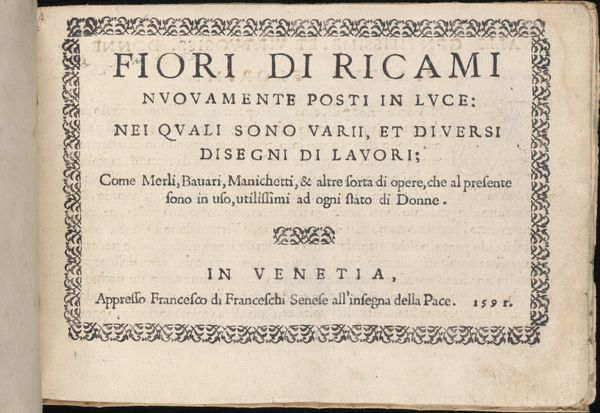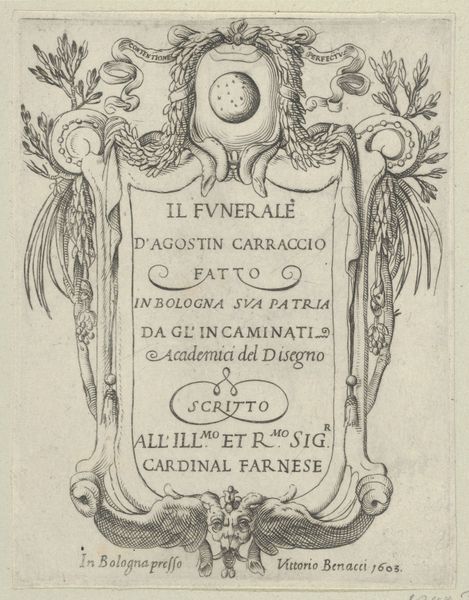
graphic-art, print, engraving
#
graphic-art
# print
#
cityscape
#
italian-renaissance
#
engraving
Dimensions: height 293 mm, width 374 mm
Copyright: Rijks Museum: Open Domain
Curator: We’re looking at the title page for "Li Giardini di Roma" which translates to "The Gardens of Rome", an engraving from 1683 by Giovanni Battista Falda, now residing here at the Rijksmuseum. Editor: Its austere typography and framing create a distinctly formal presence; the effect is something like stone tablets with an important public announcement chiseled on their surface. It communicates importance but with an interesting economy of form. Curator: Indeed, the title page performs multiple functions. Primarily, it introduces Falda's series of prints showcasing Rome's gardens. These were very popular at the time, serving as visual records but also reinforcing the status of those landowners with significant holdings. Editor: Considering this image as a formal element, the hierarchy of fonts dictates the reading and, by extension, understanding. "LI.GIARDINI.DI.ROMA" in bold sets the tone; a stage direction promising both literal and symbolic landscapes of power. Curator: You touch on a key aspect. The plates themselves weren't simply topographic. The precise renderings suggest order, control, and prosperity; essentially branding specific family legacies, as we'd recognize them now. Falda was effectively employed to communicate status. Editor: And even here, devoid of those vistas, the promise permeates. I read words such as, "CON.LE.LORO.PIANTE.ALZATE.E.VEDVTE.IN.PROSPETTIVA", seeing potential as one might see architectural or garden designs rendered today for unbuilt places. The vision begins right here. Curator: The very choice of Italian, instead of say Latin, is a deliberate appeal to the cultural elite but perhaps even to those on the Grand Tour, who purchased prints as souvenirs and to share ideas regarding landscapes when returning home. It was an Italian language that was a language of the Roman elite and the wealthy travelling to the capital of Italy. Editor: That detail emphasizes the power of this modest page to activate international exchange. This single carefully conceived design has a subtle resonance that reaches beyond time. Curator: I agree. Falda’s architectural framing, in concert with the text, transforms a simple title into an emblem of both artistic and social ambition, very relevant even today, wouldn't you agree? Editor: Absolutely. Analyzing even the seemingly simple, utilitarian components exposes the visual mechanisms by which class, influence, and culture operate—mechanisms that continue in altered yet clearly recognizable forms.
Comments
No comments
Be the first to comment and join the conversation on the ultimate creative platform.
